Here’s a number that kept me up at night: $1.52 trillion. That’s how much technical debt U.S. companies are sitting on right now, according to the IT-CISQ 2022 Report. I’ve been in enough boardrooms to see what this really means – talented developers walking out because they’re tired of babysitting 40-year-old COBOL systems while watching competitors eat their lunch with modern tech.
I remember sitting in a hospital IT meeting where they couldn’t pull up a patient’s allergy information because it was in a different system than their prescriptions. That’s not a statistic – that’s potentially deadly. And it happens every day because nobody wants to tackle the monster of modernization.
The reality? 70% of banks globally are still running on legacy systems that Nixon could have used. Over 60% of U.S. hospitals are trying to save lives with software that’s older than some of their doctors. These aren’t just numbers on a slide deck – they represent real people dealing with real problems that could sink their businesses tomorrow.
What I’ve learned from being elbow-deep in hundreds of these projects is that success isn’t about having the biggest budget or the shiniest technology. It’s about not screwing up what others have already figured out. Some companies have walked through this minefield and lived to tell about it. Others? Well, let’s just say their CTOs are updating their LinkedIn profiles.

Table of Contents
-
What Makes a Legacy System Modernization Case Study Worth Your Time
-
Financial Services: Banking on Digital Transformation
-
Healthcare Systems: Healing Through Technology
-
Government & Public Sector: Serving Citizens Better
-
Manufacturing & Industrial: Building the Future
-
Retail & E-commerce: Shopping Revolution
-
Transportation & Logistics: Moving Forward
-
Real-World Implementation: From Simple to Complex
-
How to Evaluate These Case Studies for Your Business
-
Final Thoughts
TL;DR
-
Legacy system modernization isn’t optional anymore – it’s survival mode, with technical debt hitting $1.52 trillion and climbing
-
The companies that succeed follow similar playbooks: bite-sized phases, serious change management, and metrics that actually matter
-
JPMorgan threw $12 billion at the problem over five years and cut downtime in half – but good luck replicating that with your budget
-
Mayo Clinic spent $1.5 billion on Epic and eliminated 25% of duplicate tests – after a year of doctors threatening to quit
-
UK’s Gov.uk platform is saving £4.1 billion annually on a £2.3 billion bet – turns out citizens actually like government websites that work
-
Siemens hit 99.99% quality rates and halved production time, but getting there meant retraining everyone and rethinking everything
-
Walmart’s $3.5 billion omnichannel gamble paid off with 37% e-commerce growth – pure survival against Amazon
-
UPS saves 100 million miles annually with their ORION system – 10 years and $1 billion to teach computers what good drivers already knew
-
Simple upgrades like POS systems can deliver 40% efficiency gains in months, while ERP overhauls take 2-3 years and test everyone’s patience
-
The smart money uses pilot programs and keeps the old system running until the new one actually works
What Makes a Legacy System Modernization Case Study Worth Your Time
Not every modernization story deserves your attention. Most are either marketing fluff or disasters dressed up as success stories. The ones that actually matter share specific traits that make them relevant to your particular brand of chaos.
Business context is everything. When JPMorgan Chase modernizes their core banking platform, that’s gold if you’re running a large financial institution dealing with similar regulatory nightmares and transaction volumes that could crash a small country’s economy. But if you’re managing a community bank with three branches, you’ll get more value studying how smaller institutions survived their upgrades without going bankrupt.
Industry relevance goes way deeper than “we both use computers.” Healthcare systems face different demons than manufacturing plants, even when they’re both replacing software from the Carter administration. Regulatory environments, compliance requirements, and customer expectations create unique challenges that don’t translate across sectors.
Similar to how we analyze advanced analytics for strategic growth, evaluating modernization case studies requires looking beyond surface similarities to understand the real drivers of success and failure.
|
Evaluation Criteria |
High Relevance (9-10/10) |
Medium Relevance (6-8/10) |
Low Relevance (4-6/10) |
|---|---|---|---|
|
Industry Context |
Same sector, similar regulations |
Related industry, some overlap |
Different sector, minimal overlap |
|
Organization Size |
Similar employee count/revenue |
Within 2x size difference |
Significantly different scale |
|
Technical Complexity |
Comparable system age/integration |
Some similarities in architecture |
Different technology stack |
|
Budget Range |
Within 50% of your budget |
2-3x your budget range |
5x+ budget difference |
|
Timeline Expectations |
Similar urgency/constraints |
Somewhat flexible timeline |
No time pressure similarity |
Technical Assessment Criteria That Actually Matter
The age of your legacy system tells you which horror stories to pay attention to. Companies migrating from 40-year-old COBOL mainframes face challenges that don’t exist if you’re just upgrading from a 10-year-old Java application. It’s the difference between archaeological excavation and routine maintenance.
Integration complexity separates the weekend projects from the career-defining death marches. Some modernizations involve connecting three simple systems. Others require orchestrating dozens of interconnected platforms that were never meant to talk to each other. Data volume and migration complexity can turn a six-month project into a three-year nightmare.
Performance requirements separate the nice-to-have improvements from the “fix this or we’re all fired” transformations. A system processing millions of daily transactions has different stakes than one generating monthly reports that three people read.
Here’s a reality check: a regional bank looking at JPMorgan Chase’s $12 billion core banking overhaul needs to focus on the strategy, not the scale. JPMorgan processes 5 billion transactions daily across 60 countries. The regional bank handles 50,000 transactions across three states. The regional bank should steal JPMorgan’s phased approach and risk mitigation playbook, not try to replicate their infrastructure spending.
Modernization Approach Evaluation
Strategy type determines whether you’re taking a calculated risk or betting the company. Complete replacements offer clean slates but carry “update your resume” levels of risk. Gradual migrations reduce the chance of catastrophic failure but stretch timelines until everyone loses patience. Hybrid approaches balance both concerns but require project managers with the patience of saints.
Timeline and phases show you what’s actually realistic versus what sounds good in PowerPoint presentations. When Singapore spent eight years building their Smart Nation platform, that tells you something about scope and complexity that your three-month estimate probably missed.
Risk mitigation strategies reveal how experienced teams handle the inevitable disasters. The best case studies don’t just show you the victory laps – they detail the 2 AM emergency calls and how teams solved problems that would have sunk lesser projects.
Success Metrics and Outcomes
Quantifiable benefits separate marketing spin from actual results. Cost savings, performance improvements, and efficiency gains give you concrete expectations, assuming the numbers aren’t completely fabricated for the press release.
ROI timeline helps you manage expectations with stakeholders who think technology projects work like ordering from Amazon. Some modernizations pay for themselves in 18 months. Others require five years to show positive returns, during which you’ll be explaining the investment to increasingly skeptical executives.
User adoption rates tell you whether the modernization actually worked or just moved the problems around. Technical success means nothing if people refuse to use the new system or find creative ways to work around it.
Long-term sustainability shows whether the solution actually solved the underlying problems or just created new ones. A modernization that needs major updates within two years didn’t really fix anything – it just reset the countdown timer.
Financial Services: Banking on Digital Transformation
Financial institutions face a perfect storm of challenges that make modernization both critical and terrifying. Regulatory compliance, security requirements, and zero tolerance for downtime create constraints that would make other industries weep. Plus, you’re dealing with people’s money, which tends to make everyone nervous.

1. JPMorgan Chase – Core Banking Platform Overhaul
Core banking modernization is like performing heart surgery while the patient runs a marathon. One wrong move and you’re explaining to regulators why millions of customers can’t access their money. JPMorgan Chase tackled this nightmare with their 40-year-old COBOL-based systems that processed millions of daily transactions but couldn’t support anything resembling modern banking.
$12 billion. Five years. That’s what it took to gradually migrate to cloud-native microservices architecture using Java and Python. This wasn’t some weekend project – they carefully migrated components while keeping everything running because “sorry, the bank is down” isn’t an acceptable customer service message.
The results? Downtime dropped by half, which sounds great until you realize they were still dealing with outages that made headlines. Processing speed improved by 30%, and maintenance costs fell by 60%. The real win was fraud detection that actually works in real-time instead of catching problems after your customers’ accounts are already drained.
2. ING Bank – Digital-First Transformation
ING figured out what many banks still haven’t: customers expect their banking apps to work as well as their social media apps. Their legacy systems couldn’t handle mobile-first banking demands, and customer patience was wearing thin faster than their competitive advantages.
€800 million over three years bought them a complete platform rebuild with cloud-native architecture. The timing was smart – European banking regulations were tightening, so they used compliance requirements as political cover for the massive spending.
Digital customer acquisition jumped 40%, operational costs dropped 25%, and they hit 99.9% system availability. More importantly, they can actually launch new products in weeks instead of years, which turns out to be useful when fintech startups are eating traditional banks’ lunch.
3. Commonwealth Bank of Australia – Real-Time Banking
Australian bank customers were getting frustrated with batch-processing systems that made their account balances look like they were updated by carrier pigeon. Real-time expectations from digital natives demanded immediate processing, not “check back tomorrow to see if your deposit cleared.”
Four years and AUD $1.1 billion later, they had real-time core banking that actually works. Migration from batch processing to instant updates required careful coordination because “oops, we lost a day of transactions” tends to make customers cranky.
Real-time transaction processing delighted customers – satisfaction scores jumped 35%. Processing costs dropped 20%, and their mobile banking app stopped being a source of customer complaints. Turns out people like knowing their account balance immediately after making a deposit.
4. BBVA – Cloud-First Banking Architecture
BBVA’s siloed legacy systems were like a house built by adding rooms without blueprints. Nothing connected properly, launching new products took forever, and integrating acquired companies required teams of consultants and lots of prayer.
Six years and €4.8 billion bought them complete migration to cloud-based microservices. This wasn’t just upgrading software – they had to rethink how banking actually works when systems can talk to each other.
New features now deploy 70% faster, infrastructure costs dropped by half, and regulatory compliance became manageable instead of a constant crisis. The modern architecture supports BBVA’s expansion into new markets without requiring a complete system rebuild every time they cross a border.
Healthcare Systems: Healing Through Technology
Healthcare modernization carries life-and-death stakes that don’t exist in other industries. Patient safety, regulatory compliance, and care coordination create unique challenges that make every decision feel like it could end up in a malpractice lawsuit.

5. Mayo Clinic – Electronic Health Records Integration
Mayo Clinic’s disconnected systems were like having a medical team where the cardiologist couldn’t see what the neurologist prescribed. Duplicate tests, medication errors, and care coordination failures weren’t just inefficient – they were dangerous.
The $1.5 billion Epic rollout over three years connected all facilities through shared patient records. But here’s what the press releases didn’t mention: the first year was absolutely brutal. Doctors who’d been practicing for 20 years suddenly couldn’t figure out how to order a simple blood test. Physicians were threatening to quit, and patient wait times doubled while everyone learned the new system.
Eventually, it worked. All patient records are now digitized and accessible across facilities. Duplicate tests dropped 25%, which saves money and spares patients from unnecessary procedures. Care coordination improved 40%, and patient safety got better through shared information. But getting there required surviving a year of chaos that tested everyone’s patience.
A mid-sized hospital considering EHR modernization can learn from Mayo’s pain without replicating their scale. Mayo succeeded because they formed physician-led implementation committees and mapped workflows before touching any technology. The smaller hospital should steal Mayo’s change management approach: clinical champions, detailed workflow analysis, and comprehensive training programs. While Mayo spent $1.5 billion across 65,000 employees, a 500-bed hospital might achieve similar results with a $50 million Epic implementation using Mayo’s proven methodology.
6. NHS Digital – Patient Record Modernization
The UK’s National Health Service faced 65 million patient records scattered across systems that couldn’t talk to each other. Paper-based processes and fragmented digital records meant critical patient information lived in silos across the entire healthcare system.
£8 billion over five years created a cloud-based patient record system with AI-powered insights. This massive undertaking required coordination across thousands of healthcare providers who all had different systems, different processes, and different levels of enthusiasm for change.
All 65 million patient records are now digitized and accessible to authorized providers. Administrative time dropped 30%, which means healthcare workers can focus on patients instead of paperwork. Clinical decision-making improved with better data, and population health analytics support evidence-based policies instead of guesswork.
7. Kaiser Permanente – Integrated Care Platform
Kaiser Permanente’s legacy systems prevented coordinated care delivery across their integrated model. When your business model depends on coordinated care, disconnected platforms that can’t share information become an existential threat.
Seven years and $4 billion created a custom-built integrated platform connecting all care touchpoints. This comprehensive approach required extensive customization for Kaiser’s unique integrated model, which meant building solutions that didn’t exist off the shelf.
Seamless care coordination now serves 12 million members effectively. Hospital readmissions dropped 20%, saving costs while improving outcomes. Preventive care delivery improved, and patient engagement tools support Kaiser’s population health management approach. The integrated platform finally matches their integrated care model.
8. Cleveland Clinic – AI-Enhanced Diagnostic Systems
Cleveland Clinic’s outdated diagnostic systems limited precision medicine capabilities and slowed test result delivery. Modern healthcare demands faster, more accurate diagnostics supported by artificial intelligence, not just human interpretation.
$500 million over four years created a modern platform with integrated AI and machine learning capabilities. Implementation required extensive validation to ensure diagnostic accuracy and regulatory compliance – you can’t just plug in AI and hope it works with people’s lives.
Diagnostic accuracy improved 15%, which directly impacts patient outcomes in measurable ways. Test result delivery accelerated 30%, improving patient satisfaction and enabling quicker treatment decisions. Predictive analytics for patient outcomes and improved research capabilities position Cleveland Clinic as a leader in precision medicine.
Government & Public Sector: Serving Citizens Better
Government modernization faces unique challenges including political pressures, public scrutiny, and the need to serve all citizens regardless of their technical sophistication or patience for bureaucracy.
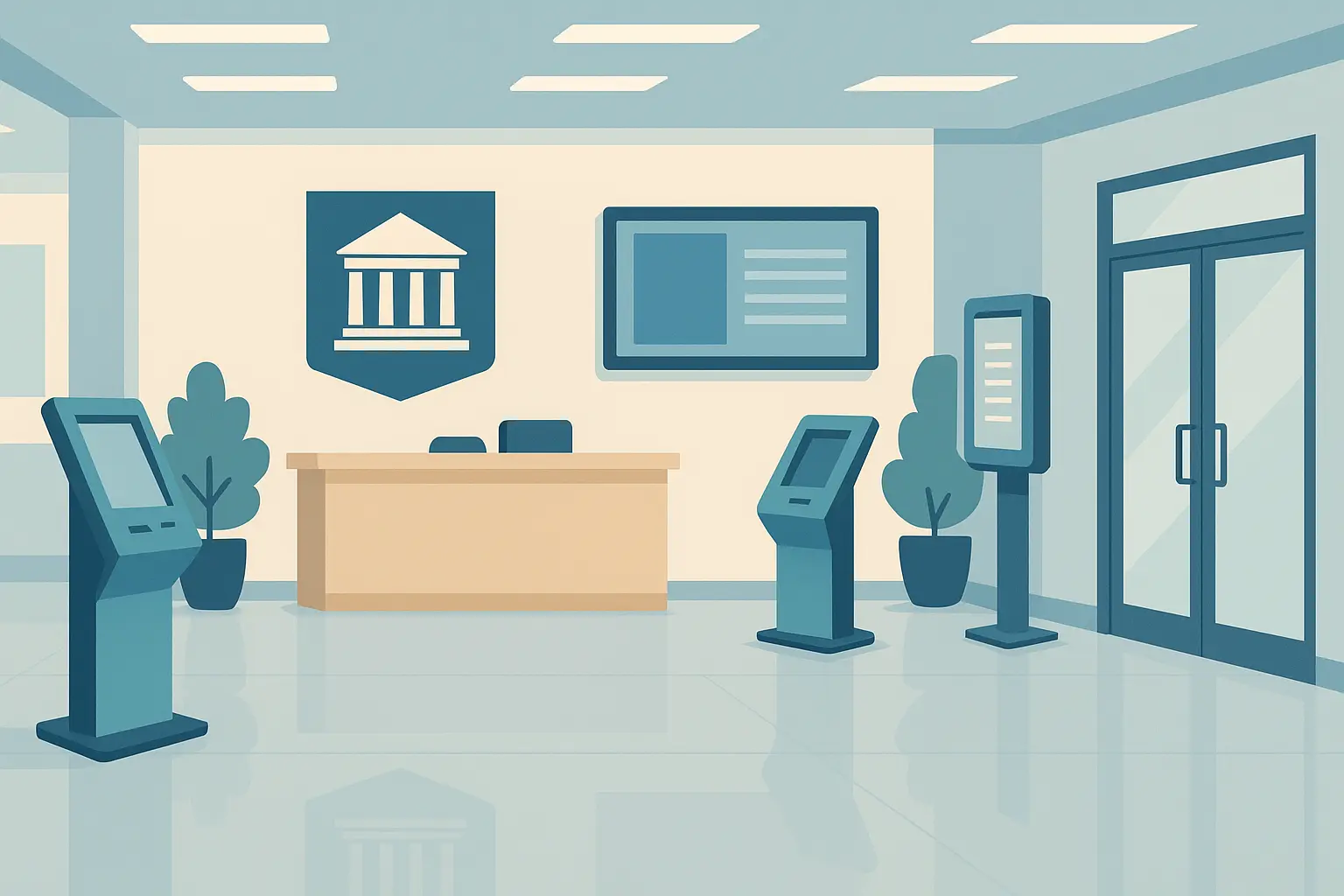
9. UK Government Digital Service – Gov.uk Platform
The UK government operated hundreds of fragmented websites that made filing taxes feel like solving a puzzle designed by sadists. Citizens faced inconsistent user experiences and duplicated functionality that wasted resources while frustrating everyone involved.
£2.3 billion over five years created a unified digital platform with citizen-centric design. This required coordination across government departments that had been operating independently for decades, plus extensive user research to figure out what citizens actually needed versus what bureaucrats thought they wanted.
90% of government services are now available online with consistent user experiences that don’t make citizens want to throw their computers out the window. The real kicker? £4.1 billion in annual savings on a £2.3 billion investment. That’s government math that actually works. Citizen satisfaction hit 85%, and processing times dropped 60% – turns out people like government websites that function like it’s the 21st century.
10. Estonia – Digital Government Infrastructure
Estonia emerged from Soviet occupation with paper-based government systems that belonged in a museum. Starting from scratch gave them opportunities for innovative approaches that established governments could only dream about.
€200 million over 15 years created complete digitization with blockchain-secured infrastructure. This comprehensive approach made Estonia a global leader in digital government services, though it helps when your entire population is smaller than most major cities.
99% of government services are available online, setting global standards that make other countries look embarrassingly backward. They save 2% of GDP annually through efficiency gains – sustainable value creation that compounds over time. The world’s first digital residency program and enhanced cybersecurity create competitive advantages that attract international business.
|
Government Modernization Comparison |
UK Gov.uk |
Estonia Digital Gov |
Singapore Smart Nation |
|---|---|---|---|
|
Investment |
£2.3 billion |
€200 million |
S$19 billion |
|
Timeline |
5 years |
15 years |
8 years (ongoing) |
|
Services Online |
90% |
99% |
85% |
|
Annual Savings |
£4.1 billion |
2% of GDP |
25% traffic reduction |
|
Citizen Satisfaction |
85% |
94% |
78% |
|
Key Innovation |
User-centered design |
Blockchain security |
IoT integration |
11. Singapore – Smart Nation Platform
Singapore’s aging IT infrastructure couldn’t support integrated services needed for a modern city-state. Disconnected systems prevented coordinated urban planning and service delivery in a country where efficiency isn’t optional – it’s survival.
S$19 billion over eight years (and counting) invests in integrated IoT and AI-powered government services. This ambitious project requires coordination across all government agencies and extensive citizen engagement in a culture that actually values long-term planning.
The unified citizen services portal provides seamless access to government services. Smart traffic management cuts congestion by 25% – meaningful in a place where traffic jams can paralyze the entire country. Predictive healthcare analytics and enhanced urban planning capabilities position Singapore as a global smart city leader, though scaling this to larger, more diverse populations remains an open question.
12. City of Barcelona – Smart City Integration
Barcelona operated disconnected municipal systems that couldn’t support coordinated city management. Inefficient resource usage and limited citizen engagement hindered urban development in a city trying to balance tourism, residents, and sustainability.
€47 million over six years created an IoT-enabled integrated city management platform. This comprehensive approach required extensive sensor deployment and system integration across city operations, plus convincing citizens to participate in digital initiatives.
Water usage dropped 30% through smart meters – environmental benefits that actually matter. Waste collection efficiency improved 30%, reducing costs while keeping the city cleaner. Enhanced citizen engagement through mobile apps and €36 million annual savings show how smart city technology can improve urban governance when implemented thoughtfully.
Manufacturing & Industrial: Building the Future
Manufacturing modernization must balance innovation with operational continuity. Production downtime costs can reach millions per hour, making careful planning essential and mistakes catastrophically expensive.
Just as we’ve seen with Amazon’s operational transformation, manufacturing companies must orchestrate complex system integrations while keeping production lines running and customers happy.
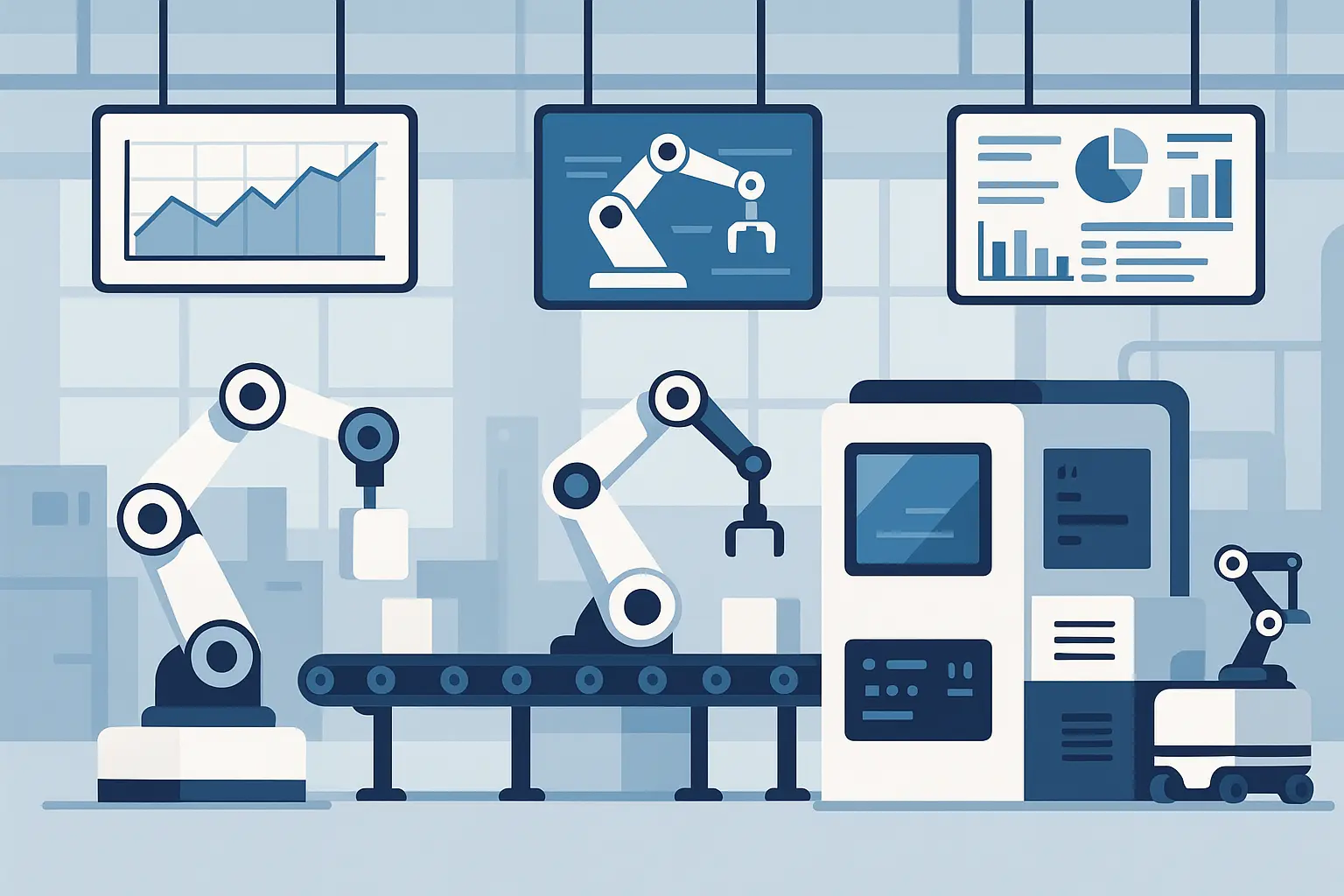
13. General Electric – Predix Industrial IoT Platform
GE’s legacy industrial equipment provided about as much monitoring capability as a smoke signal. Reactive maintenance meant expensive surprises and safety risks that kept plant managers awake at night wondering what would break next.
$1 billion over four years created a cloud-based IoT platform for predictive maintenance. This required sensor installation across thousands of industrial assets and convincing old-school maintenance crews that computers could predict failures better than their decades of experience.
Unplanned downtime dropped 20%, saving millions in lost production and overtime costs. Operational efficiency improved 15%, and they generated $1.6 billion in productivity gains. Enhanced safety monitoring protects workers while reducing liability risks – turns out preventing accidents is cheaper than dealing with their consequences.
14. Siemens – Digital Factory Transformation
Siemens faced traditional manufacturing processes that couldn’t adapt to mass customization demands. When customers want personalized products delivered yesterday, inflexible production lines become competitive disadvantages.
€600 million over five years implemented Industry 4.0 with AI and robotics integration. This transformation required extensive worker retraining and process redesign – imagine convincing factory workers who’ve done things the same way for 20 years that robots are their friends, not their replacements.
Production time dropped by half, dramatically improving competitiveness. They achieved 99.99% quality rates, eliminating defects and waste. Setup times fell 75%, and flexible mass customization capabilities enable rapid response to customer demands. But getting there meant retraining everyone and rethinking everything about how manufacturing actually works.
15. Boeing – Digital Manufacturing Platform
Boeing’s paper-based processes and disconnected manufacturing systems created inefficiencies and quality risks in aircraft production. When you’re building flying machines, quality problems aren’t just expensive – they’re potentially deadly.
$2.5 billion over six years across multiple facilities created an integrated digital manufacturing platform with AR/VR capabilities. Implementation required extensive worker training and process validation for safety-critical applications because the FAA doesn’t accept “it worked in the demo” as certification.
Assembly time dropped 40%, accelerating aircraft delivery schedules in an industry where delays cost millions. Wiring errors fell 90%, improving safety and reducing rework costs. Enhanced worker training, improved safety, and better supply chain coordination strengthen Boeing’s manufacturing capabilities despite the massive upfront investment.
16. Ford – Smart Factory Initiative
Ford’s aging manufacturing systems couldn’t support production flexibility demanded by modern consumers. Traditional production lines designed for mass production of identical vehicles couldn’t handle the customization levels customers now expect.
$1.2 billion over four years across global facilities created an AI-powered manufacturing platform with real-time optimization. This required coordination across Ford’s global manufacturing network and cultural changes in plants that had operated the same way for decades.
Production efficiency increased 25%, improving competitiveness in challenging automotive markets. Energy consumption dropped 30%, supporting sustainability goals while reducing costs. Improved quality control, defect detection, and enhanced worker safety through predictive analytics demonstrate comprehensive benefits that justify the investment.
Retail & E-commerce: Shopping Revolution
Retail modernization must balance online and offline experiences while managing complex supply chains and rapidly changing consumer expectations. Get it wrong, and customers simply shop elsewhere.
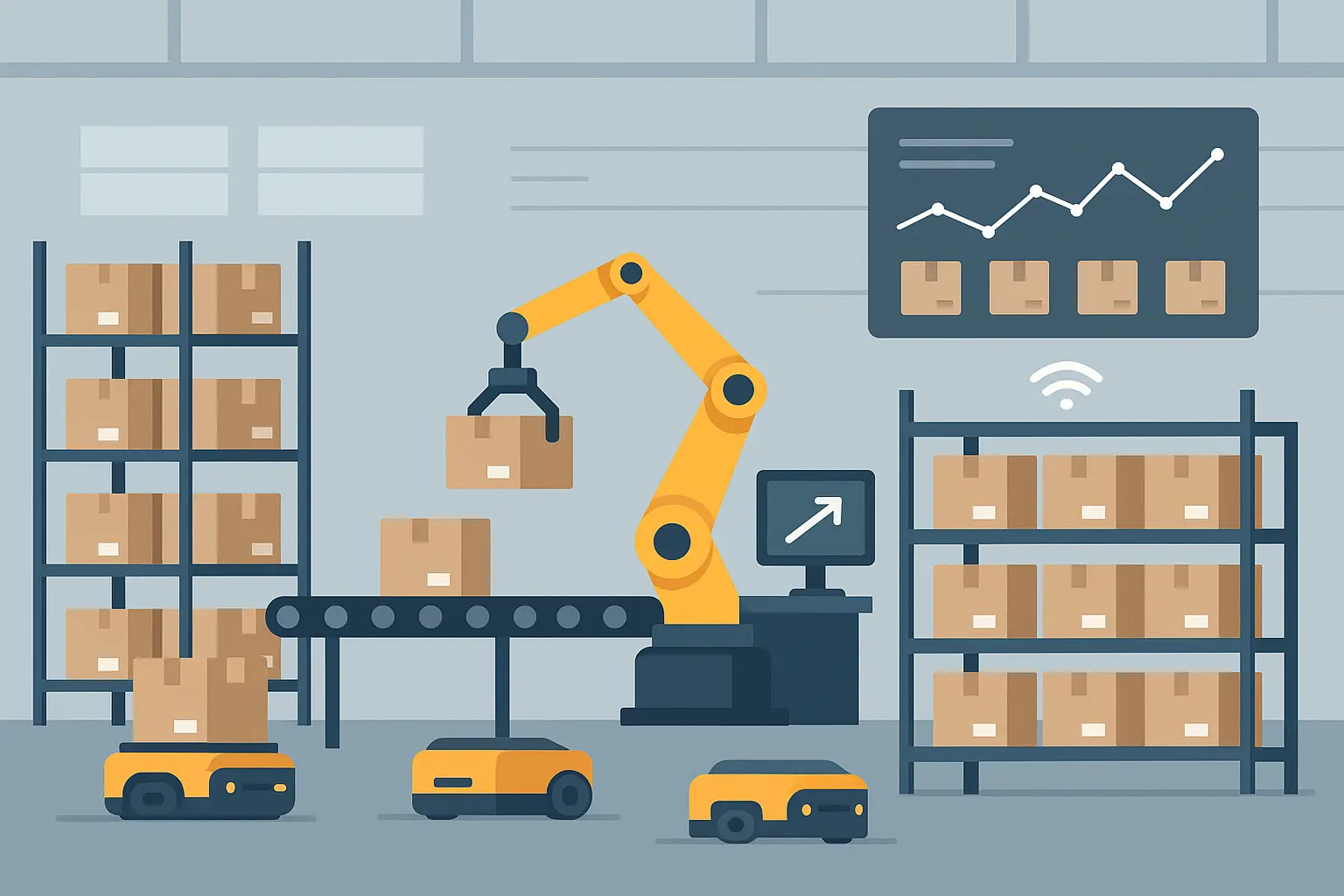
17. Walmart – Omnichannel Platform Transformation
Walmart’s separate online and offline systems created customer experiences that made shopping feel like navigating a bureaucracy. Customers couldn’t seamlessly move between channels, and inventory visibility was so limited that “in stock online” often meant “good luck finding it in the store.”
$3.5 billion over four years created a unified commerce platform with real-time inventory management. This wasn’t about customer experience – it was pure survival. Amazon was eating their lunch, and they knew it.
E-commerce sales grew 37%, demonstrating successful digital transformation in a company not known for digital innovation. Inventory accuracy hit 95% across channels, eliminating customer disappointment from phantom inventory. Order fulfillment accelerated 50%, and enhanced customer personalization improved competitive positioning against Amazon and other digital-first retailers.
Similar to insights from our comprehensive Walmart case study analysis, the company’s success came from systematically integrating digital and physical retail operations while maintaining operational excellence.
18. Target – Digital Commerce Modernization
Target’s legacy systems couldn’t support mobile and digital growth demanded by customers who expected their shopping apps to work as well as their entertainment apps. Slow website performance and limited mobile capabilities were driving customers to competitors with better digital experiences.
$2 billion over three years bought a complete rebuild with cloud-native platform and microservices architecture. This required careful coordination to maintain operations during the transition because “sorry, our website is down during Black Friday” isn’t an acceptable customer service message.
Digital sales increased 200%, validating the investment in modern commerce capabilities. Same-day delivery capabilities now compete directly with Amazon Prime. Site performance improved 40%, and enhanced mobile shopping experiences attract and retain digital-native customers who have zero patience for slow, clunky websites.
A regional grocery chain studying Target’s transformation should focus on the phased rollout strategy rather than the $2 billion price tag. Target succeeded by modernizing their mobile app first, then their website, followed by inventory systems integration. The grocery chain could start with a $500,000 mobile app upgrade, measure customer adoption, then gradually expand to online ordering and curbside pickup. Target’s key lesson: prioritize customer-facing improvements first to generate revenue that funds backend modernization.
19. Home Depot – Supply Chain Digitization
Home Depot’s manual supply chain processes created inefficiencies that frustrated both customers and employees. Limited visibility led to stockouts of popular items and overstock of products nobody wanted, plus customers couldn’t rely on finding what they needed.
$1.2 billion over five years created an AI-powered supply chain platform with predictive analytics. Implementation required integration across suppliers, distribution centers, and retail locations – coordinating thousands of moving parts across a complex network.
Inventory costs dropped 15%, improving profitability while maintaining customer service levels. Product availability hit 98%, ensuring customers find what they need when they visit stores. Delivery times improved 30%, and enhanced demand forecasting accuracy supports Home Depot’s professional contractor customer base who can’t afford to waste time on multiple store visits.
20. Zara – Fast Fashion Technology Platform
Zara’s traditional retail systems couldn’t keep up with fast-changing fashion trends. In an industry where being two weeks late to a trend means missing the entire sales cycle, speed to market isn’t just competitive advantage – it’s survival.
€2.7 billion over three years created an integrated design-to-shelf platform with real-time analytics. This required coordination across design, manufacturing, and retail operations in a company where decisions measured in days can make or break entire product lines.
Design-to-shelf time dropped by half, maintaining Zara’s competitive advantage in fast fashion. Inventory turnover increased 20%, improving profitability while reducing waste. Enhanced trend prediction capabilities and improved sustainability tracking support Zara’s brand positioning and regulatory compliance in an industry facing increasing scrutiny.
Transportation & Logistics: Moving Forward
Transportation modernization must balance efficiency gains with service reliability while managing complex logistics networks and regulatory requirements that vary by country, state, and sometimes city.
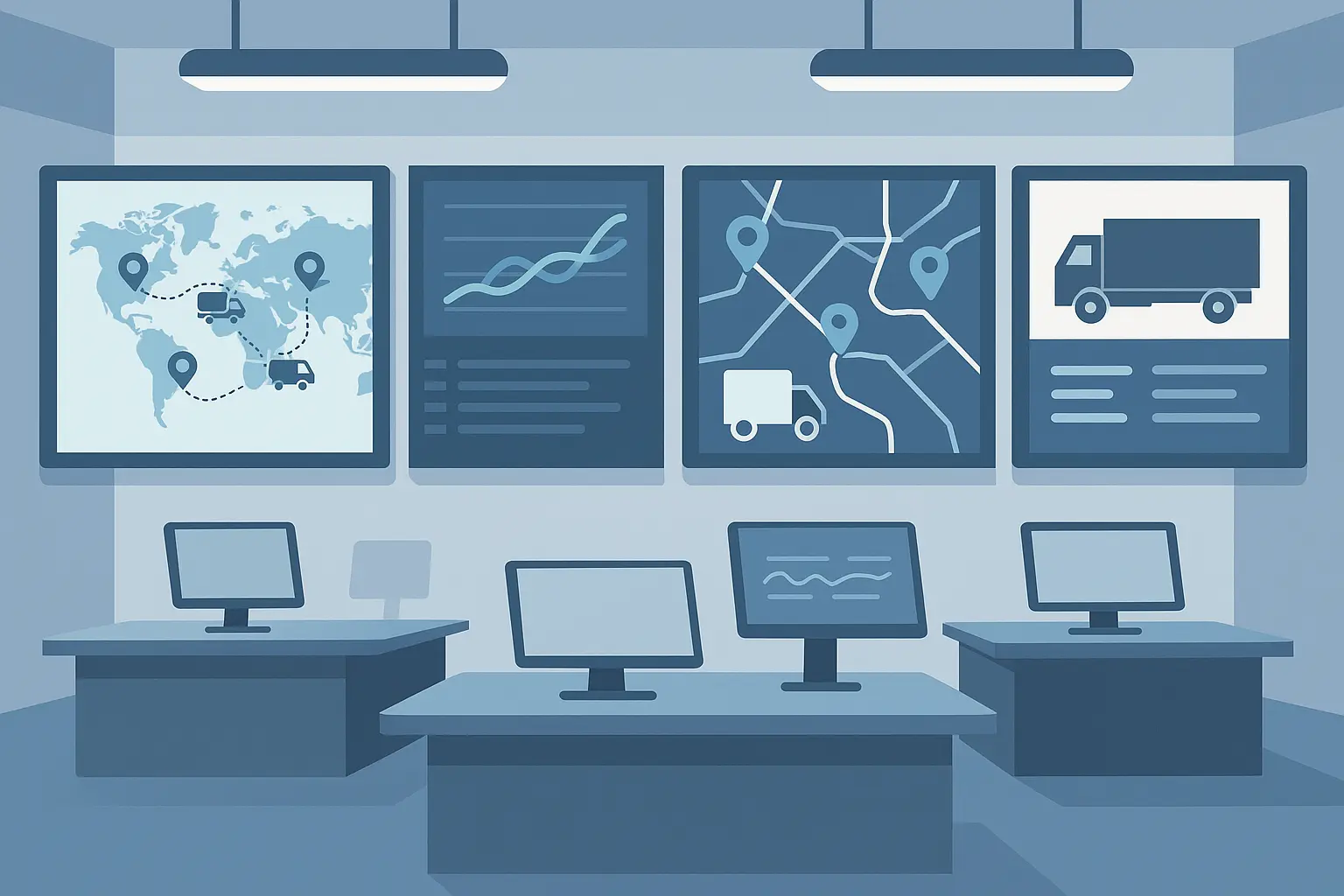
21. UPS – ORION Route Optimization System
UPS drivers relied on manual route planning that created inefficiencies everyone could see but nobody could solve. Complex delivery networks required optimization that human planners couldn’t achieve, no matter how experienced they were.
$1 billion over 10 years created an AI-powered route optimization and fleet management platform. This required extensive driver training and operational process changes – imagine convincing drivers who’d been doing routes the same way for 20 years that a computer could do it better.
They save 100 million miles annually, demonstrating massive efficiency gains that compound over time. Fuel consumption dropped 10%, supporting sustainability goals while reducing costs. $300-400 million annual savings and enhanced customer delivery experience justify the substantial investment, though it took a decade to get there.
Much like the strategic approach detailed in our Uber transformation analysis, UPS leveraged data-driven optimization to fundamentally reimagine operational efficiency while maintaining service quality standards.
22. Maersk – Digital Container Shipping Platform
Maersk’s paper-based processes and limited shipment visibility frustrated customers who expected Amazon-level tracking for their cargo containers. Global shipping required better coordination and real-time information sharing across ports, shipping lines, and logistics partners.
$1 billion over four years created an end-to-end digital platform with IoT container tracking. Implementation required coordination across ports, shipping lines, and logistics partners worldwide – getting everyone to adopt new systems when the old ones “worked fine” required significant persuasion.
Documentation processing time dropped 30%, eliminating delays and reducing costs in an industry where time literally equals money. Real-time cargo tracking for 12 million containers improves customer satisfaction and operational visibility. Port efficiency improved 20%, and enhanced customer self-service capabilities strengthen Maersk’s competitive position.
23. London Transport – Oyster to Contactless Evolution
London’s aging Oyster card system limited payment options and created barriers for tourists and occasional users who didn’t want to figure out yet another payment system just to ride the subway.
£200 million over three years created a contactless payment system with mobile integration. This transition required careful management to maintain service during changeover because shutting down London transport isn’t really an option.
70% of journeys now use contactless payments, improving convenience for passengers who can use the same card they use everywhere else. Ticket processing costs dropped 15%, and enhanced passenger experience demonstrates clear benefits. Improved revenue collection and analytics provide better insights for service planning.
24. FedEx – SenseAware IoT Tracking Platform
FedEx’s limited package visibility created challenges for high-value and sensitive shipments. Customers shipping expensive or temperature-sensitive items demanded real-time tracking and environmental monitoring that traditional tracking couldn’t provide.
$500 million over five years created an IoT-enabled tracking platform with real-time monitoring. Implementation required sensor integration and platform development for various package types – engineering solutions for everything from pharmaceuticals to fine art.
Real-time tracking for high-value shipments improves customer confidence and reduces insurance costs. Damaged goods claims dropped 25%, saving money while improving customer satisfaction. Enhanced cold chain monitoring and improved customer confidence support FedEx’s premium service positioning.
25. Uber – Real-Time Matching Platform Evolution
Uber’s original platform couldn’t scale to global demand and sophisticated matching requirements. Rapid growth required more sophisticated algorithms and infrastructure that could handle millions of simultaneous requests without melting down.
$2 billion over three years created a microservices architecture with AI-powered matching. This comprehensive transformation required careful management to maintain service during transition because “sorry, no rides available due to technical difficulties” tends to send customers to competitors.
They now support 100+ million monthly users without the system collapsing. Wait times dropped by half, improving customer satisfaction and driver utilization. Driver utilization improved 30%, and enhanced surge pricing algorithms optimize marketplace efficiency – though explaining surge pricing to angry customers remains a work in progress.
Real-World Implementation: From Simple to Complex
Understanding implementation complexity helps you set realistic expectations and plan appropriate resources. The difference between simple and complex implementations isn’t just budget – it’s the difference between weekend projects and career-defining initiatives.
Similar to how we approach ROI calculations for marketing investments, evaluating modernization complexity requires understanding the relationship between investment scale, timeline expectations, and expected returns.
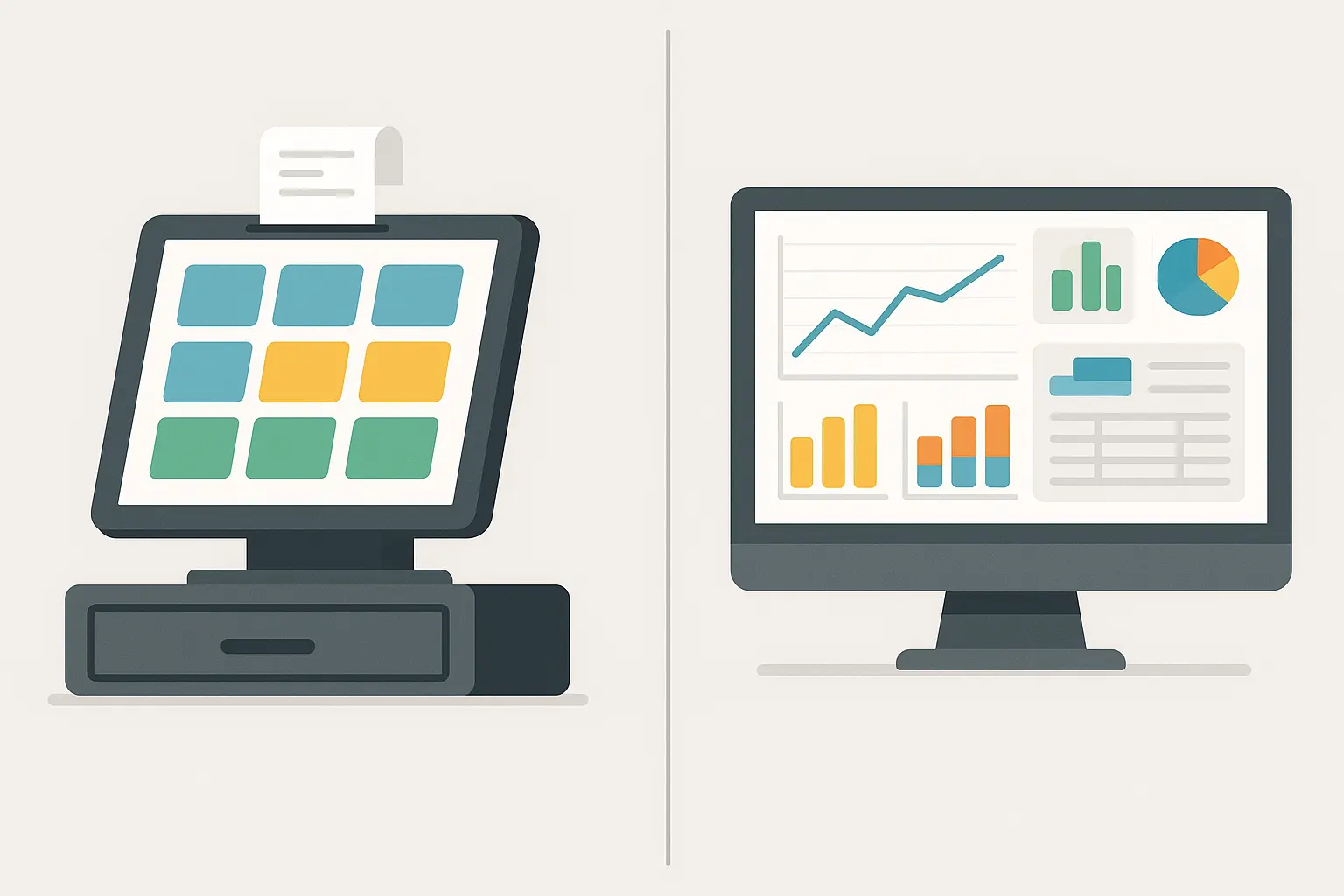
Simple Implementation Example: Small Business POS System Modernization
A local restaurant chain with five locations was struggling with DOS-based POS systems that belonged in a computer museum. Manual inventory tracking and limited reporting meant they were flying blind on their most important operational metrics.
The modernization to cloud-based POS with integrated inventory and analytics was straightforward. Two weeks for assessment and requirements gathering. One month pilot at their busiest location to test the system under real conditions and identify problems before rolling out everywhere.
Two weeks of staff training – mostly convincing servers that the new system wouldn’t make their jobs harder. Two months to roll out to remaining locations, applying lessons learned from the pilot. Ongoing optimization based on data insights from the new system.
Order processing accelerated 40%, improving customer satisfaction during busy periods when every second counts. Inventory discrepancies dropped 90%, eliminating waste and improving profitability. Real-time sales analytics across all locations enable better decision-making. $25,000 annual savings in labor costs justify the investment within the first year – simple math that makes sense to restaurant owners.
|
Implementation Complexity |
Simple (POS Upgrade) |
Medium (CRM Modernization) |
Complex (ERP Transformation) |
|---|---|---|---|
|
Timeline |
2-4 months |
6-12 months |
18-36 months |
|
Budget Range |
$10K-$50K |
$100K-$500K |
$1M-$10M+ |
|
Team Size |
2-3 people |
5-10 people |
20-50+ people |
|
Business Disruption |
Minimal |
Moderate |
Significant |
|
Training Required |
1-2 weeks |
4-8 weeks |
3-6 months |
|
ROI Timeline |
6-12 months |
12-18 months |
24-48 months |
Complex Implementation Example: Enterprise ERP Modernization
A manufacturing company with 10,000 employees needed to modernize their SAP R/3 system that couldn’t support modern business requirements. Here’s the dirty secret: SAP basically forced everyone’s hand by ending support for R/3. So when you see these “successful transformations,” remember companies didn’t have much choice.
The migration to SAP S/4HANA Cloud with AI and analytics integration required careful planning that felt like military logistics. Phase 1 assessment and planning took six months – current state analysis, process mapping, future state design, gap analysis, data quality assessment, change management planning, and infrastructure planning. Basically figuring out what they had, what they needed, and how to get there without breaking everything.
Phase 2 foundation setup required four months for cloud infrastructure provisioning, security framework implementation, master data migration, integration layer development, and testing environment setup. This is where you discover all the ways your data is messier than you thought.
Phase 3 core implementation lasted 12 months covering finance module deployment, supply chain management implementation, manufacturing execution system integration, human resources module rollout, and customer relationship management setup. Each module brought new challenges and creative ways for things to go wrong.
Phase 4 advanced features took six months for AI-powered analytics implementation, predictive maintenance module deployment, real-time reporting creation, mobile application development, and API ecosystem development. The fancy stuff that justifies the massive investment.
Phase 5 go-live and support required three months for user acceptance testing, production deployment, hypercare support, performance optimization, and knowledge transfer. This is where you find out if all that planning actually worked.
They ended up spending $9 million: $2.5 million for software licenses, $4 million for implementation services (consultants are expensive), $1.5 million for infrastructure, and $1 million for training and change management.
Eighteen months later, the results validated the investment: Month-end closing time dropped 35%, improving financial reporting speed. Inventory turnover improved 25%, reducing working capital requirements. Reporting and analytics accelerated 50%, enabling better decision-making. $3.2 million annual operational savings with ROI achieved in 2.8 years – assuming everything goes according to plan, which it rarely does.
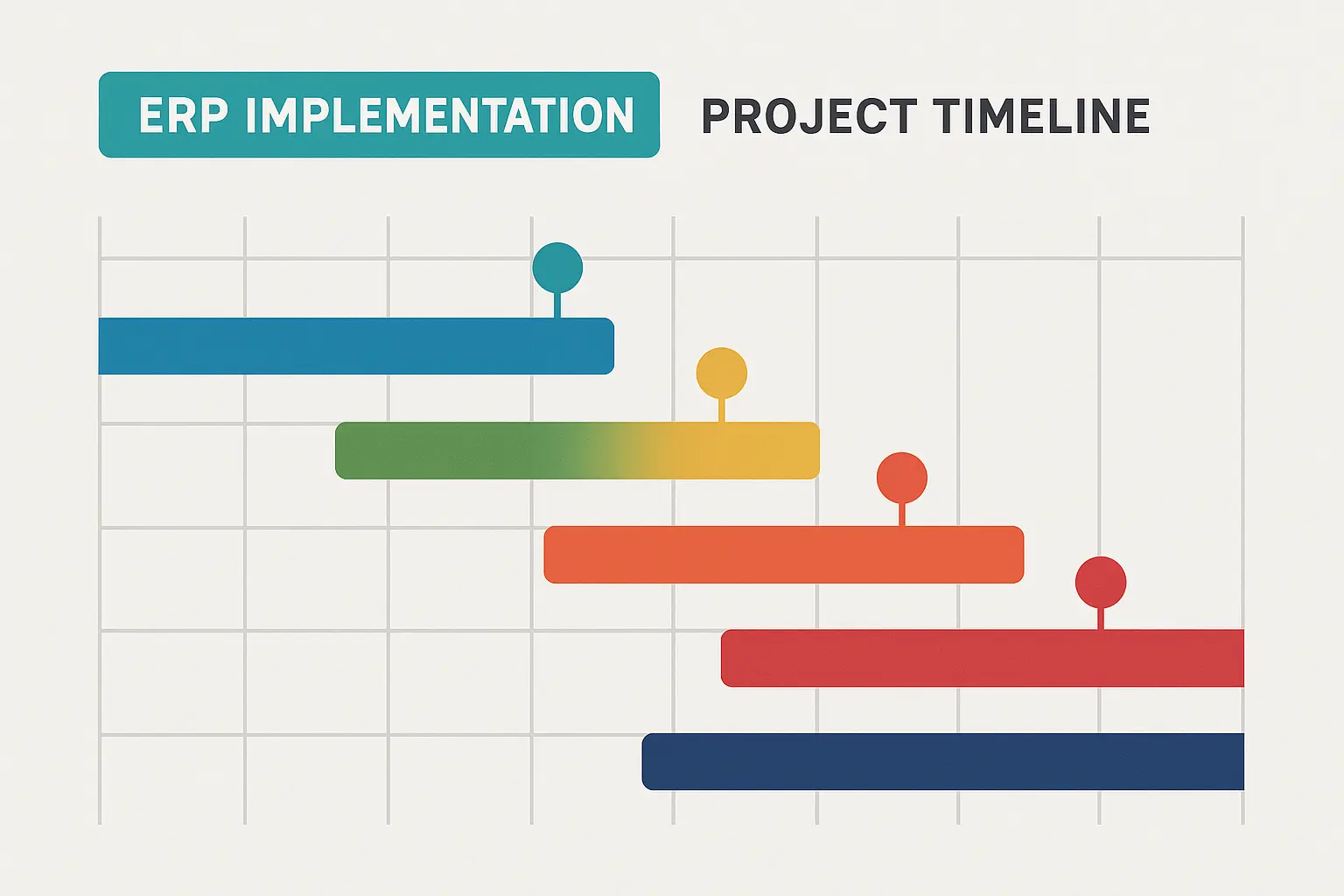
How to Evaluate These Case Studies for Your Business
Evaluating case studies requires looking beyond the marketing polish to understand what actually applies to your situation. Most case studies are dressed-up success stories that conveniently omit the disasters, delays, and budget overruns that happen in real life.
Business Context Alignment Analysis
High alignment cases offer direct applicability to similar organizations. JPMorgan Chase provides perfect guidance for large financial institutions with similar regulatory nightmares and transaction volumes. Mayo Clinic offers ideal templates for large healthcare systems needing integrated patient care. UK Government Digital Service provides frameworks for government digital transformation, though good luck replicating their political support.
Medium alignment cases have good applicability but important differences. Walmart’s omnichannel transformation works for large retailers but may be overkill for smaller operations. Siemens’ digital factory applies to manufacturing but requires cultural change management that many companies underestimate. UPS ORION relates to logistics companies, but ROI timelines vary significantly based on fleet size and route complexity.
Lower alignment cases still offer valuable insights if you know what to look for. Estonia’s digital government achieved excellent outcomes but required unique political and social conditions that don’t exist elsewhere. GE Predix demonstrates high technical complexity that may not suit all industrial applications. Uber’s platform evolution applies specifically to ride-sharing and marketplace businesses.
Technical Assessment Evaluation
Low complexity modernizations offer clear paths with manageable risks. Restaurant POS upgrades involve minimal integration requirements, clear ROI calculations, and low implementation risks. Target’s commerce platform modernization had well-defined scope with proven cloud technologies. London Transport’s contactless payment system represented incremental upgrades with fallback options.
High complexity modernizations require extensive planning and risk management. JPMorgan’s core banking overhaul involved mission-critical systems with zero tolerance for downtime. NHS patient records modernization operated at massive scale with life-safety implications. Boeing’s manufacturing platform required complex integration with safety-critical processes.
ROI and Success Metrics Performance
Exceptional ROI cases demonstrate payback periods under three years. UK Government Digital Service generates £4.1 billion annual savings on £2.3 billion investment – government math that actually works for once. Estonia’s digital government saves 2% of GDP annually through efficiency gains. UPS ORION delivers $300-400 million annual savings on $1 billion investment.
Strong ROI cases show 3-5 year payback periods with substantial benefits. ING Bank achieved 25% operational cost reduction with enhanced digital capabilities. Walmart’s omnichannel transformation generated 37% e-commerce growth offsetting $3.5 billion investment. Siemens’ digital factory delivered 50% production time reduction with quality improvements.
Long-term ROI cases require 5+ year payback periods but provide strategic advantages. Mayo Clinic’s EHR system justifies $1.5 billion investment through patient safety and care coordination benefits – though the first year nearly broke everyone’s patience. Boeing’s digital manufacturing platform achieves 40% assembly time reduction despite high upfront costs. Enterprise ERP modernization typically shows 2.8-year payback for large-scale transformations, assuming everything goes according to plan.
Just as we demonstrate in our marketing ROI calculator guide, understanding true return on modernization investments requires looking beyond simple cost savings to include strategic benefits, risk mitigation, and competitive advantages that may not appear in immediate financial metrics.
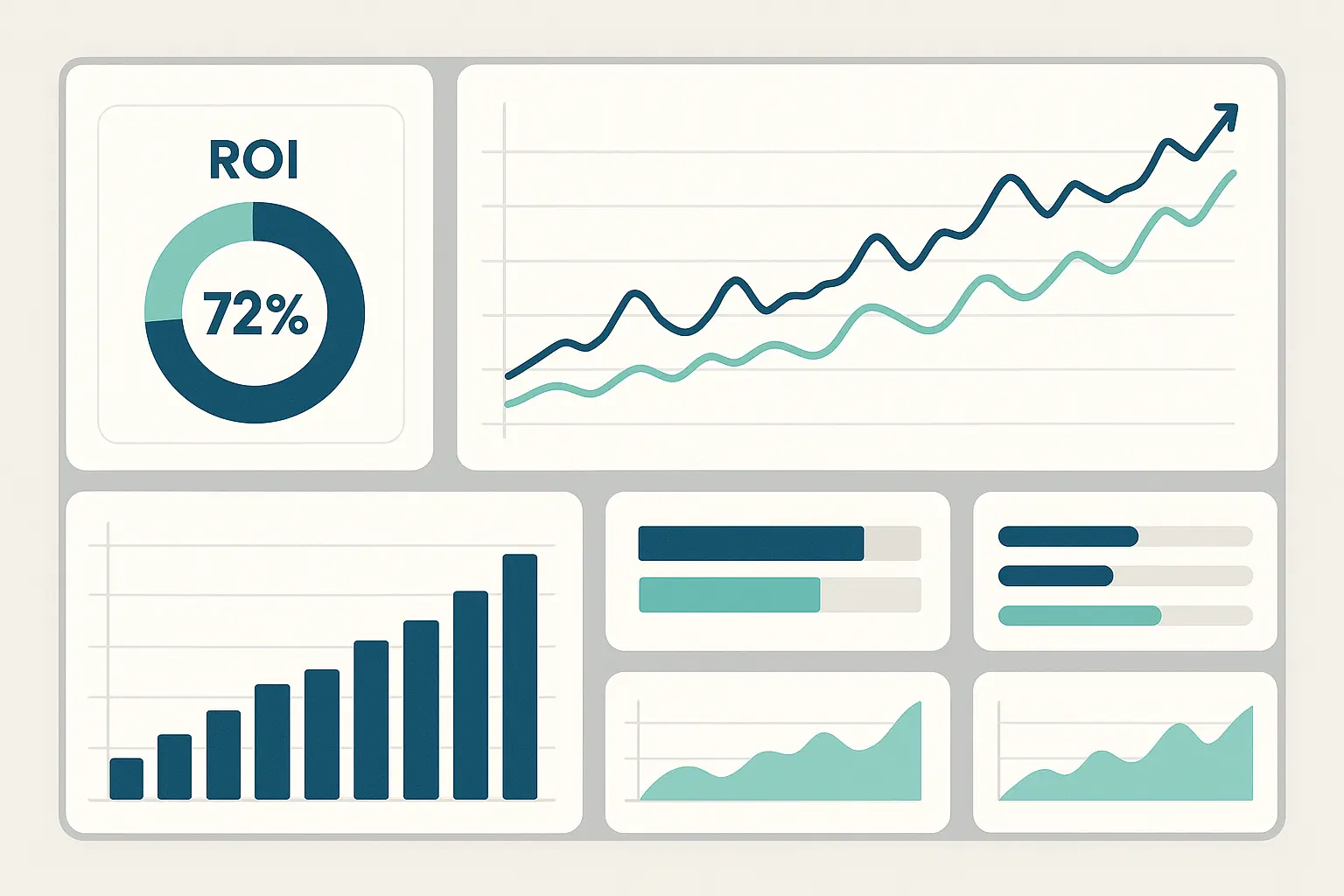
The Marketing Agency understands modernization complexity because we’ve helped businesses navigate similar transformations in their marketing technology stacks. When companies modernize their core systems, they often discover their marketing infrastructure needs updating too. Our data-driven approach to marketing optimization mirrors the systematic methodology that makes these modernization case studies successful.
We specialize in integrating modern marketing analytics with newly modernized business systems, ensuring your marketing technology keeps pace with your operational improvements. If you’re planning or executing a legacy system modernization, we can help align your marketing technology strategy with your broader transformation goals.
Final Thoughts
Legacy system modernization isn’t just about technology – it’s about transforming how your business operates, serves customers, and competes in markets where standing still means falling behind. These 25 case studies prove that success comes from careful planning, realistic expectations, and learning from others who’ve survived similar challenges.
The patterns are clear across industries and company sizes: organizations that invest in proper assessment, take phased approaches, prioritize change management, and measure results consistently achieve better outcomes. Whether you’re considering a simple POS upgrade or a complete enterprise transformation, these real-world examples provide roadmaps that can save you from expensive mistakes.
What matters most isn’t the size of your budget or the age of your legacy systems – it’s making informed decisions based on proven approaches and realistic expectations. The companies featured here didn’t succeed because they had unlimited resources; they succeeded because they planned carefully, executed systematically, and learned from both successes and inevitable setbacks.
Your modernization journey will be unique, but you don’t have to navigate it blindly. These case studies prove that legacy system modernization, when done thoughtfully with proper planning and realistic expectations, delivers transformational results that justify the investment and effort required. Just don’t expect it to be as smooth as the press releases make it sound.



